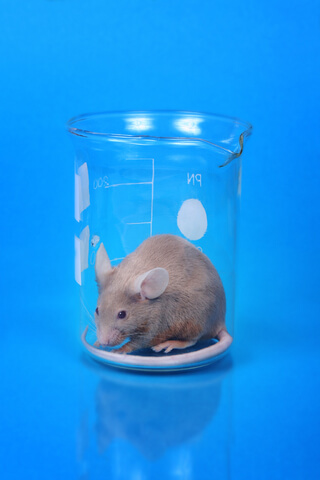
First gene therapy against aging is successful: mouse lifespan extended by 24% with a single treatment May 15, 2012 Studies have shown it is possible to lengthen the average lifespan of many species, including mammals, by acting on specific genes. To date, however, this has meant altering genes permanently from the embryonic stage – an approach impracticable in humans. Now, researchers at the Spanish National Cancer Research Centre (CNIO), led by its director María Blasco, have demonstrated that the mouse lifespan can be extended in adult life by a single treatment acting directly on the animal’s genes. And they have done so using gene therapy, a strategy never before employed to combat aging. This therapy has been found to be safe and effective in mice. The results are published in the journal EMBO Molecular Medicine. The CNIO team, in collaboration with scientists from the Universitat Autònoma de Barcelona (UAB), treated adult (one year old) and aged (two year old) mice, with gene therapy delivering a “rejuvenating” effect in both cases, according to the authors. Mice treated at the age of one lived longer by 24% on average, and those treated at the age of two, by 13%. Furthermore, the therapy produced a significant improvement in the animals’ health – delaying the onset of age-related diseases like osteoporosis and insulin resistance – and improving their neuromuscular coordination. The gene therapy itself treated mice with a DNA-modified virus, the viral genes replaced by those of a telomerase enzyme with a key role in aging. Telomerase repairs the tips of chromosomes, known as telomeres, and in doing so slows the cell’s and therefore the body’s biological clock. When the animal is infected, the virus acts as a vehicle depositing the telomerase gene in the cells. This study proves “it is possible to develop a telomerase-based anti-aging gene therapy without increasing the incidence of cancer,” the authors affirm. “Aged organisms accumulate damage in their DNA due to telomere shortening. [This study] finds that a gene therapy based on telomerase production can repair or delay this kind of damage,” they add.
Telomeres are the “caps” that protect the end of chromosomes, but they cannot do so indefinitely: each time the cell divides the telomeres get shorter, until they are so short that they lose all functionality. The cell, as a result, stops dividing and ages or dies. Telomerase gets around this by preventing telomeres from shortening or even rebuilding them. What it does, in essence, is stop or reset the cell’s biological clock. But in most cells the telomerase gene is only active before birth; the cells of an adult organism, with few exceptions, have no telomerase. The exceptions in question are adult stem cells and cancer cells, which divide limitlessly and are therefore immortal – several studies have, in fact, shown that telomerase expression is the key to the immortality of tumour cells. It is precisely this risk of tumour development that has set back the investigation of telomerase-based anti-aging therapies. In 2007, Blasco’s group demonstrated that it was feasible to prolong the lives of transgenic mice, whose genome had been permanently altered at the embryonic stage, by causing their cells to express telomerase and extra copies of cancer-resistant genes. These animals lived 40% longer, without developing cancer. Mice given the new gene therapy now under test are likewise free of cancer. Researchers believe this is because the therapy begins when the animals are adult, so do not have time to accumulate sufficient numbers of abnormal divisions for tumours to appear. Bosch also states: “Because the vector we use expresses the target gene (telomerase) over a long period, we were able to apply a single treatment. This might be the only practical solution for an anti-aging therapy, since other strategies would require the drug to be administered over the patient’s lifetime, multiplying the risk of adverse effects.”
Comments »
If you enjoyed this article, please consider sharing it:
|








